What happens to time when a spaceship travels at near-light speed?
This question challenges our very understanding of reality and delves into the realms of physics, philosophy, and futurism.
If you were aboard such a spacecraft, how would your perception of time change?
What kind of time gap would unfold between you and the people left behind on Earth?
In this article, we will explore the concept of time dilation through the lens of Einstein’s theory of relativity.
Step into the “maze of time” that near-light speed travel creates, and ponder the possibilities that await: a gateway to the future or an enigma waiting to be unraveled?
- The Basics of Time Dilation
- The Time Discrepancy Between the Spaceship and Earth
- Physical Effects of Traveling Near the Speed of Light
- The Future Impact of Near-Light-Speed Space Travel
- The Mysteries of Time Dilation on Spacecraft
The Basics of Time Dilation
How does time behave when a spaceship moves close to the speed of light?
The answer lies in Einstein’s theories of general and special relativity.
In particular, the concept of “time dilation” explained by special relativity offers an intriguing perspective on this phenomenon.
How Time Slows Down Near the Speed of Light
According to special relativity, time slows down for objects moving at speeds close to the speed of light.
This phenomenon, known as “time dilation,” means that time onboard a near-light-speed spaceship would pass slower compared to time on Earth.
For example, traveling at 99% of the speed of light, a year on the spaceship might equate to several decades passing on Earth.
This demonstrates that time is not absolute but rather relative to the observer’s motion and environment.
The Mathematics of Time Dilation
The time dilation formula ( t’ = t \sqrt{1 – v^2/c^2} ) shows how ( v ), the object’s velocity, and ( c ), the speed of light, affect the passage of time.
As velocity approaches the speed of light, the time dilation effect becomes more pronounced.
This mathematical foundation has been rigorously tested by theoretical physicists over the past century and is critical to modern technologies such as GPS.
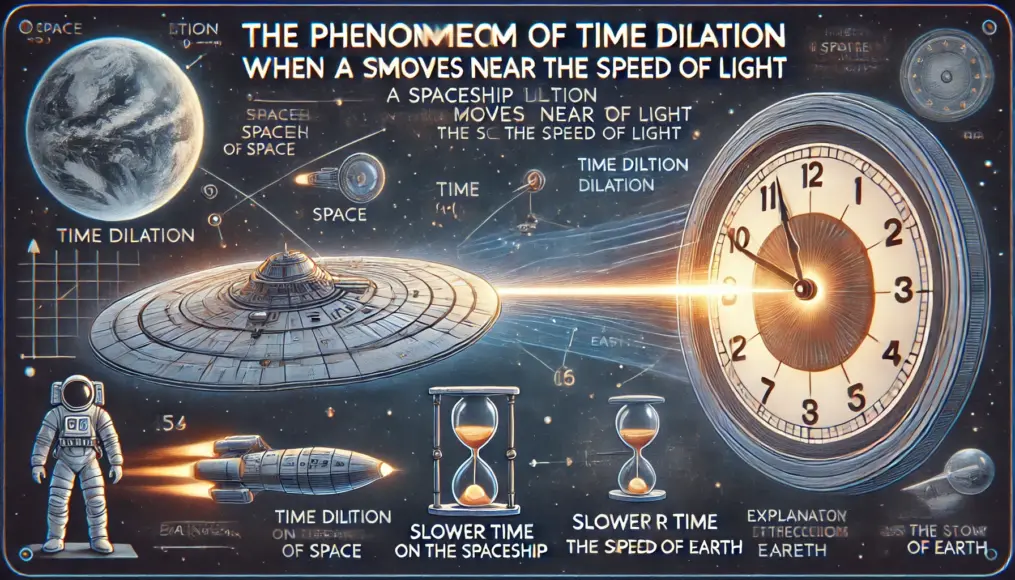
Experimental Proof of Time Dilation
Time dilation is not just theoretical—it has been observed in experiments.
For instance, fast-moving muon particles live significantly longer than stationary ones, a direct consequence of time dilation.
Similarly, atomic clocks aboard satellites run slightly faster than those on the ground, an effect accounted for in the precision of GPS technology.
These experiments confirm that Einstein’s century-old prediction about the relativity of time is indeed a tangible reality.
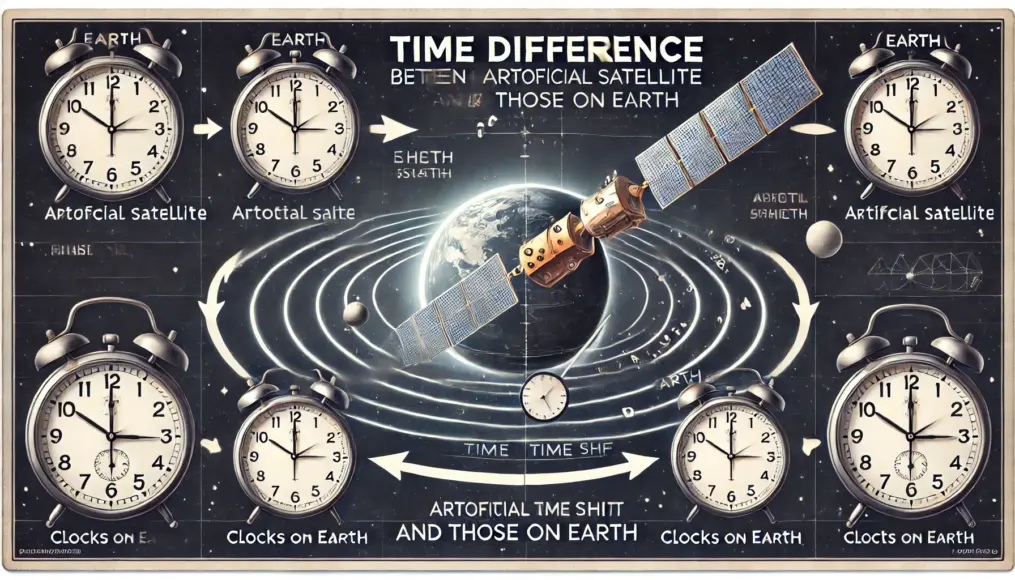
Time Dilation and the Future of Space Exploration
What practical applications might time dilation have for humanity’s future in space?
When humans acquire technology capable of near-light-speed travel, time dilation will transform from theoretical physics into a real-world challenge.
Astronauts traveling at such speeds could return to Earth to find that decades or even centuries have passed.
This phenomenon could enable humanity to explore distant stars and potentially connect with civilizations in the far future.
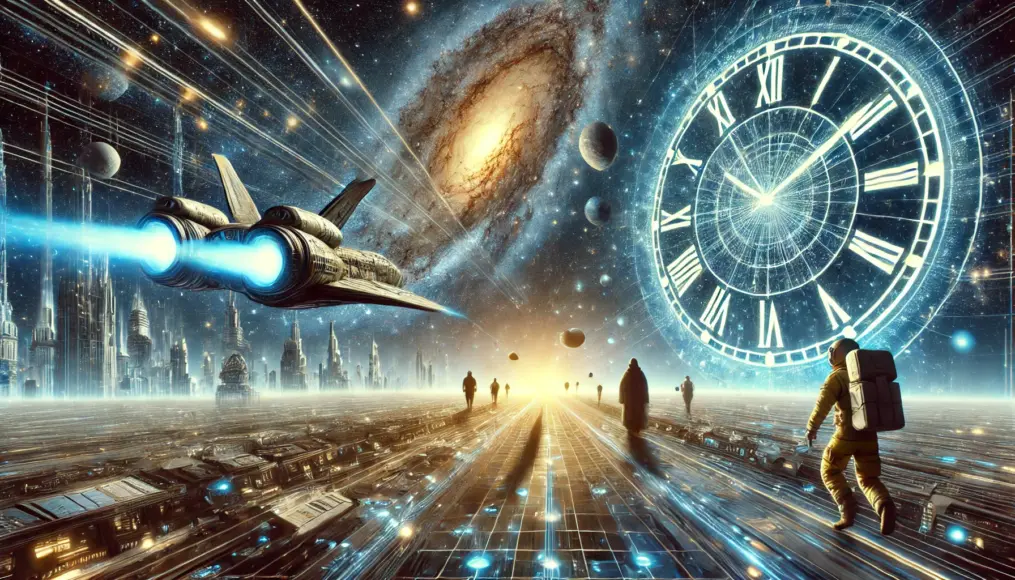
The Time Discrepancy Between the Spaceship and Earth
When a spaceship travels close to the speed of light, the time experienced by its crew becomes significantly different from the time passing on Earth.
This “time discrepancy” is on a scale that defies our everyday understanding and challenges the very fabric of reality.
How does this discrepancy arise, and just how profound can it be?
The Relativistic Effects That Create a Unique Flow of Time
Time aboard the spaceship appears to slow down dramatically when viewed from Earth.
This phenomenon, known as “time dilation” from the theory of special relativity, explains why time flows more slowly for the spaceship’s crew.
For instance, if a spaceship travels at 99.9% of the speed of light for 10 years, hundreds of years may pass on Earth.
This illustrates the groundbreaking idea that time is not absolute but instead changes depending on the observer’s velocity.
The Perspective of the Crew Versus Earth Observers
For the crew aboard the spaceship, time feels entirely normal.
Clocks tick at their usual pace, and daily activities proceed without noticeable delay.
However, from the perspective of observers on Earth, events aboard the spaceship appear to unfold in slow motion.
This “difference in perspective” adds an intriguing layer of mystery to the concept of time dilation.
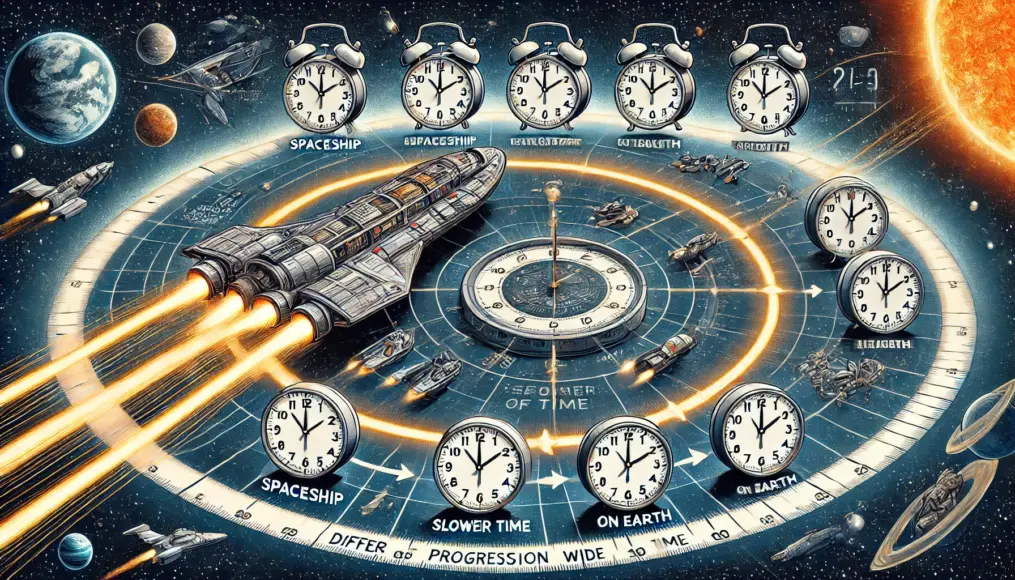
The Impact of Time Discrepancy in Numbers
Looking at the numbers, the scale of this discrepancy becomes clearer.
For example, if a spaceship travels at 90% of the speed of light for one year, about 2.3 years pass on Earth.
As the speed increases to 99.9% of the speed of light, approximately 22 years pass on Earth for every year on the spaceship.
The closer the speed gets to the speed of light, the more exponentially the time difference grows.
Real-World Experiments Validating the Theory
This phenomenon has been confirmed through real-world experiments.
For instance, the extended lifespan of muons traveling at high speeds and slight time discrepancies experienced by astronauts aboard the International Space Station (ISS) demonstrate the tangible effects of time dilation.
These findings validate that the theory aligns with reality.
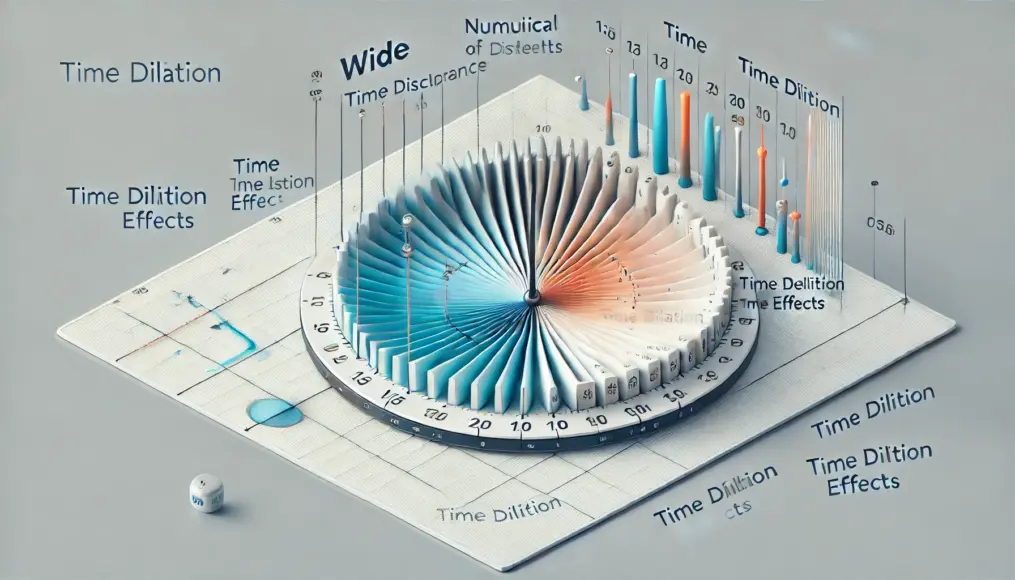
The Flow of Time for People on Earth
Meanwhile, what happens on Earth as the spaceship travels near the speed of light?
On Earth, time progresses as usual, meaning that while the crew experiences one year aboard the spaceship, decades or more may pass on Earth.
When the crew finally returns, they may find themselves in an entirely different era, separated from their own time.
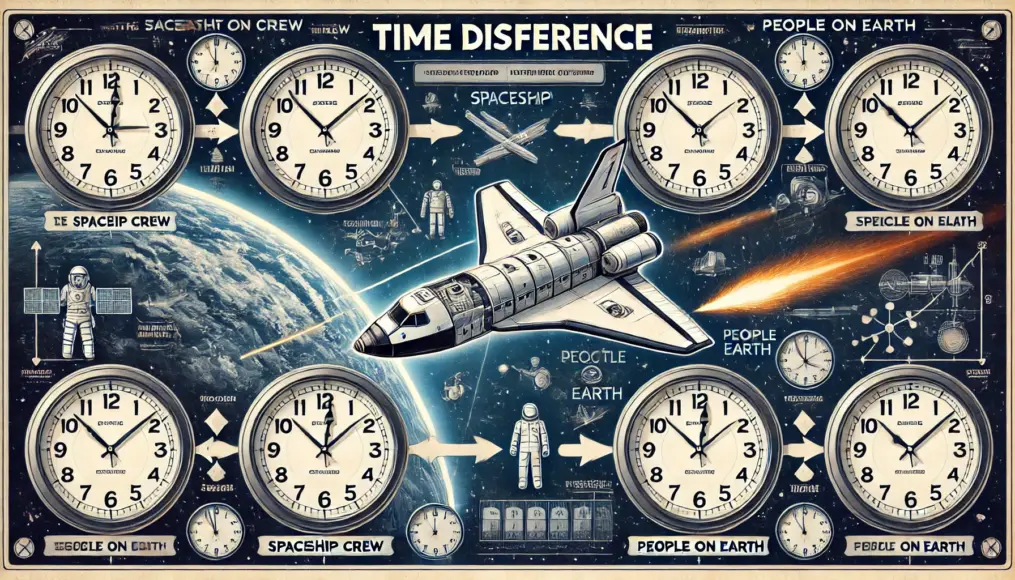
The Possibility of Moving Into the “Future”
In some ways, this phenomenon can be considered a form of “time travel to the future.”
This is because the crew aboard the spaceship essentially leap forward in time, leaving the progression of Earth’s time behind.
However, while this idea remains theoretically grounded, its implications for actual space exploration remain largely unexplored and filled with unknowns.
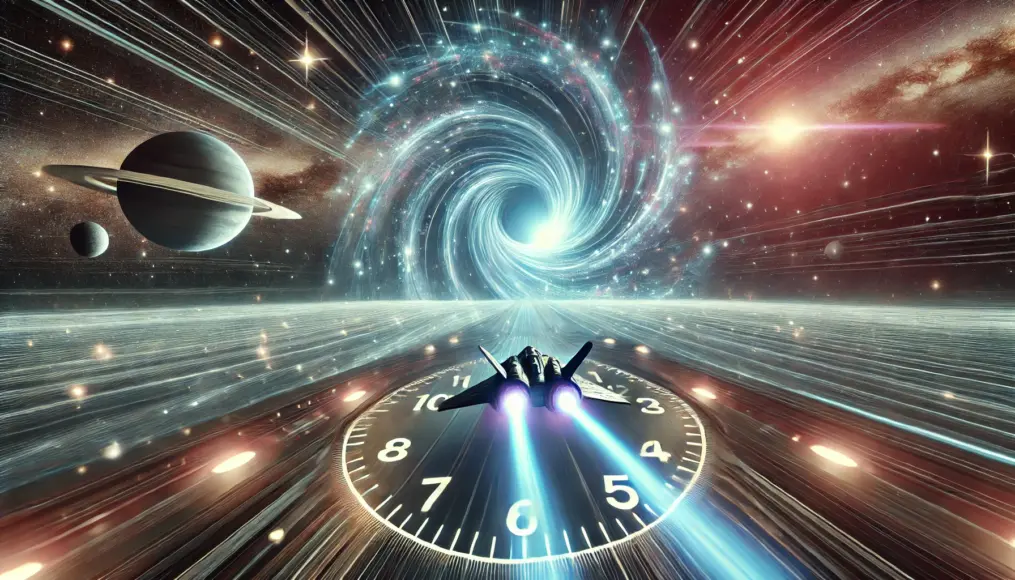
Physical Effects of Traveling Near the Speed of Light
When a spacecraft moves at a speed close to the speed of light, not only does the flow of time change for the crew, but their bodies may also experience unknown effects.
These effects are related to “extreme physical phenomena” that we do not yet fully understand.
What exactly are these effects, and how might they manifest?
The Impact of Gravity and Health Concerns
Traveling at near-light speed involves significant “gravitational effects.”
During the spacecraft’s acceleration, the crew experiences immense G-forces (gravitational acceleration), placing considerable strain on their bodies.
For example, typical space travel involves 3–4 G, but accelerating to near-light speed could far exceed this.
Bodily Damage from High G-Forces
High G-forces can severely impact the human body, including reduced blood circulation and loss of consciousness (blackout).
Blood tends to pool in the lower body, causing insufficient blood flow to the brain, which can lead to fainting.
Prolonged exposure to extreme G-forces may also damage internal organs and muscles.
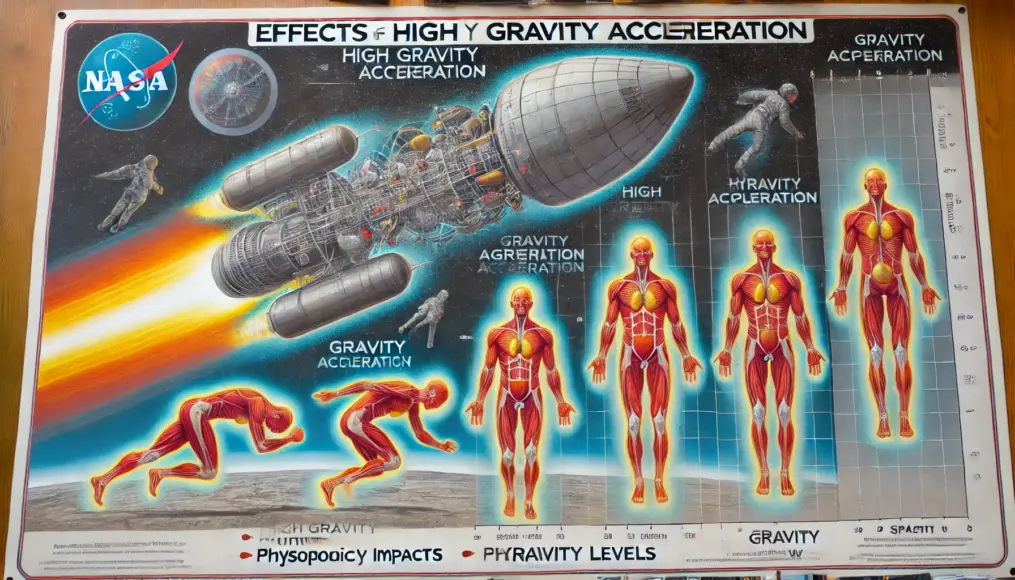
Specialized Equipment and Countermeasures During Acceleration
Spacecraft design must include specialized equipment to mitigate these effects.
For instance, G-suits that apply pressure to aid blood circulation and seat structures designed to minimize acceleration impacts have been developed.
These technologies may hold the key to making near-light-speed travel feasible.
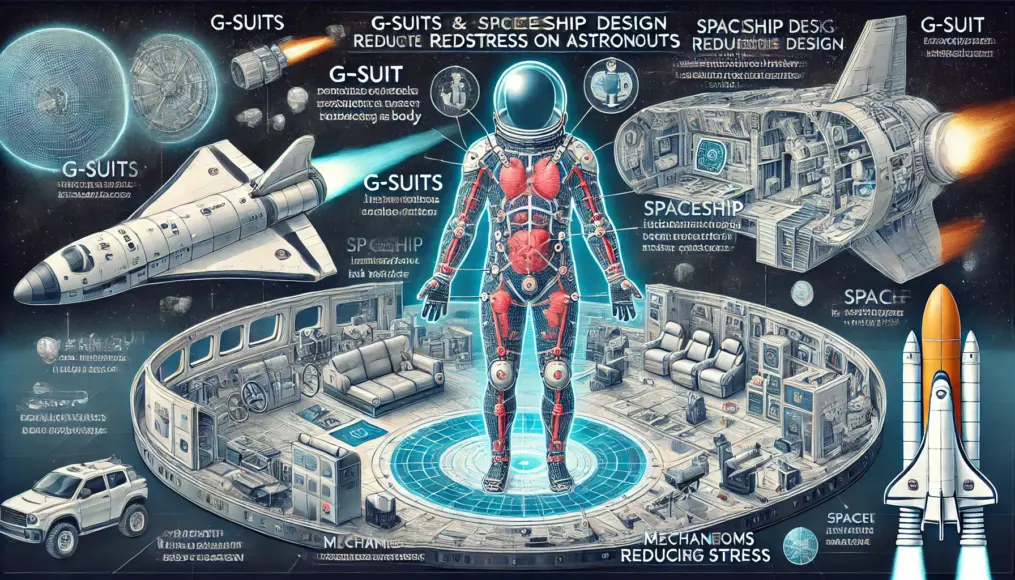
The Threat of Radiation
One of the greatest challenges facing spacecraft traveling at near-light speed is “cosmic radiation.”
High-energy radiation in space becomes increasingly intense as the spacecraft approaches light speed.
This heightened radiation could increase the risk of DNA damage and cancer among the crew.
Changes in Radiation Intensity During High-Speed Travel
As the spacecraft nears the speed of light, “relativistic effects” amplify the energy of radiation.
This phenomenon, known as “blue shift,” causes cosmic radiation to shift to shorter wavelengths, making it more hazardous.
As a result, radiation levels that are typically manageable in space travel may become critically harmful.
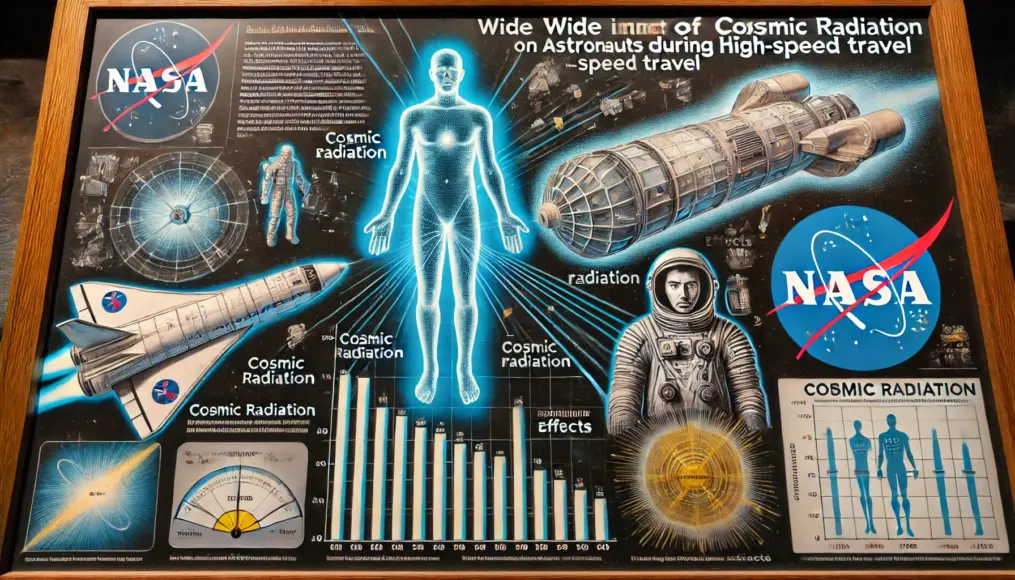
The Need for Advanced Radiation Protection
To address this challenge, advanced radiation shielding is essential.
Proposals include shields made from special metals or high-density polymers and the incorporation of liquid-filled tanks to absorb radiation.
Additionally, interior spacecraft designs that ensure crew safety in designated shielded areas are critical.
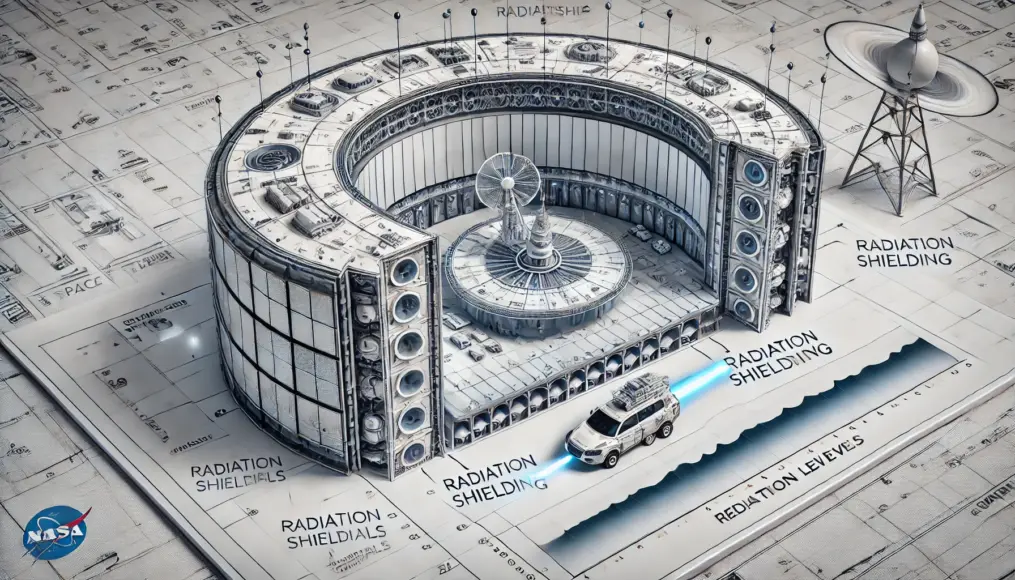
Effects on Muscles and Bones
Extended space travel is already known to cause muscle atrophy and bone density loss due to microgravity.
However, traveling at near-light speed may exacerbate these effects.
Changes in the Musculoskeletal System Due to Microgravity
In space, reduced physical activity and lower mechanical stress on bones lead to muscle weakening and osteoporosis.
Preventing these effects requires daily exercise and proper nutrition, but near-light-speed travel may demand entirely new countermeasures.
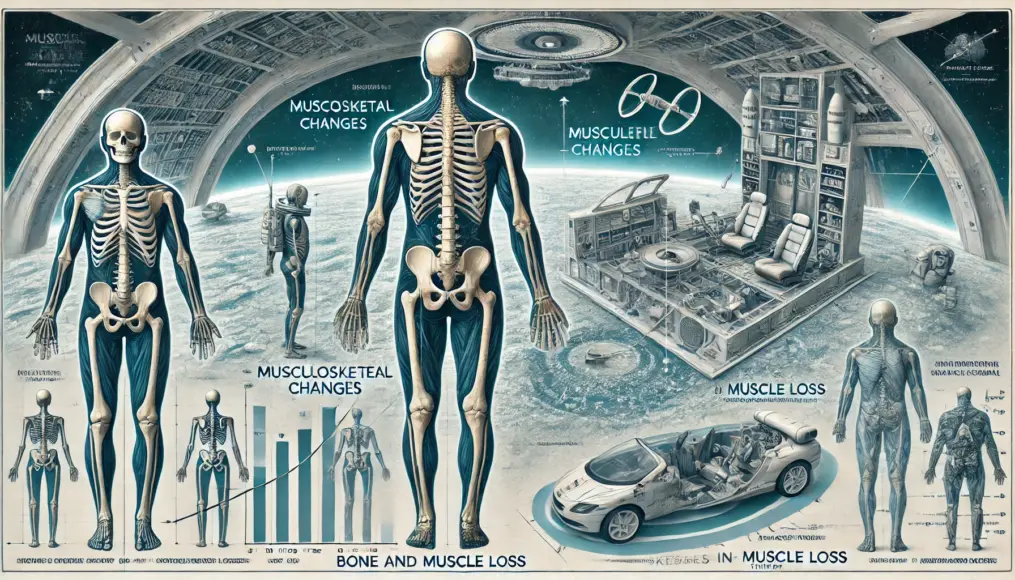
Regenerative Medicine and Genetic Therapies
Future spacecraft may incorporate regenerative medicine and genetic therapy to combat muscle and bone degeneration.
For instance, bioengineering techniques to regenerate muscle cells and genetic modifications to maintain bone density could become standard.
These advancements may help sustain crew health during extended missions.
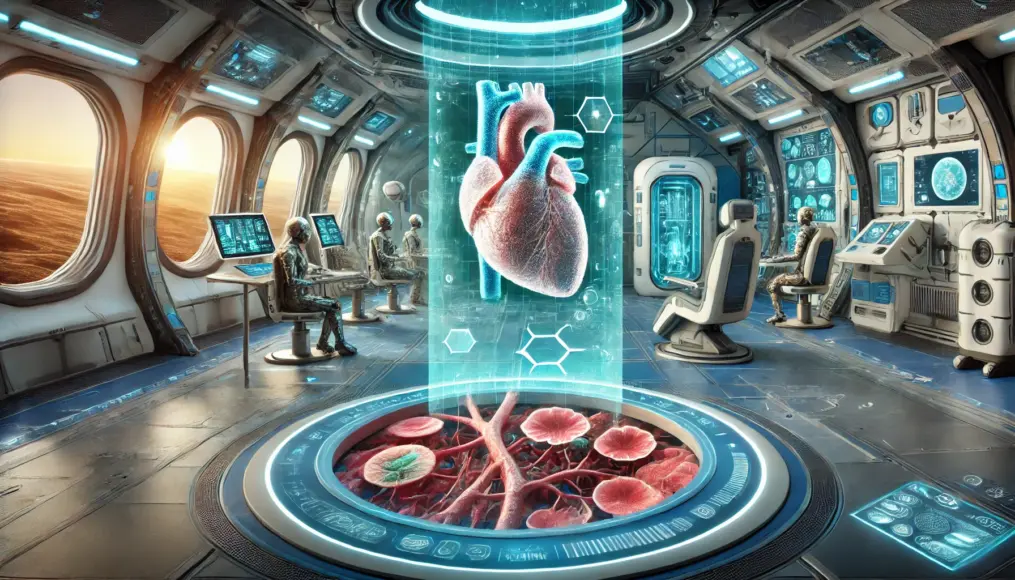
Sleep and Psychological Challenges
How might the crew mentally cope with the altered passage of time during high-speed travel?
While time on Earth progresses significantly, the crew’s subjective experience of time remains unchanged.
This disparity could lead to psychological stress and feelings of isolation.
Distorted Sense of Time and Isolation
Discrepancies in the perception of time could profoundly affect the crew’s mental state.
The feeling of being disconnected from Earth’s “present” may cause anxiety and loneliness.
To mitigate this, fostering communication among crew members and developing real-time communication technologies with Earth are crucial.
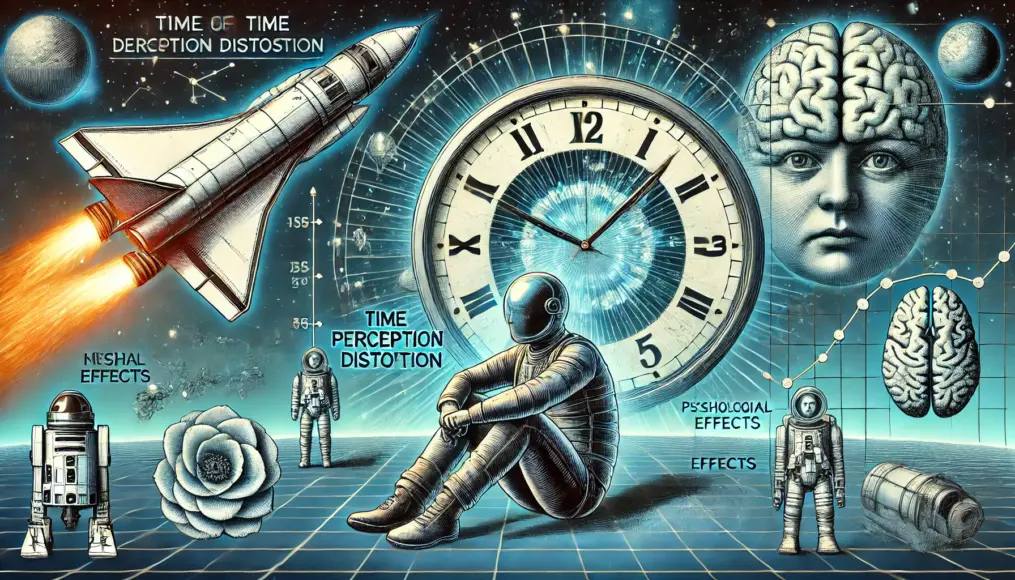
Psychological Support Through Virtual Reality and AI
Virtual reality (VR) and artificial intelligence (AI) could play a significant role in alleviating psychological stress.
For example, VR systems that simulate Earth’s landscapes and AI-based counseling services may help maintain the crew’s mental well-being.
Such technologies could ensure psychological stability during the prolonged and isolated journey.
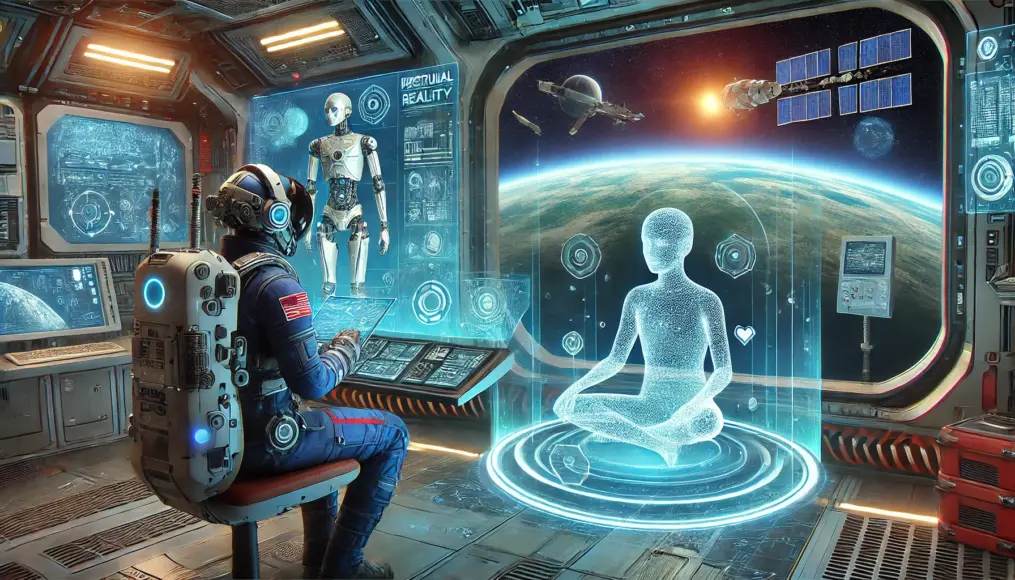
The Future Impact of Near-Light-Speed Space Travel
If space travel at near-light-speed becomes a reality, it will bring transformative changes not only in science and technology but also in societal structures and philosophical thinking.
In this section, we delve into how advancements in space travel could impact our lives and values.
Feasibility of Space Colonization
Advances in space travel technology make the once-dreamlike idea of space colonization increasingly plausible.
Humanity’s quest for new habitats propels the exploration of extraterrestrial possibilities.
Exploration and Adaptation to Habitable Planets
With near-light-speed travel, migrating to Earth-like planets within the habitable zone becomes feasible.
Surviving in these new environments would require advancements in life-support technology and adaptation to different atmospheres and gravitational forces.
Specifically, innovations in extraterrestrial construction and energy harnessing will be crucial to the success of colonization projects.
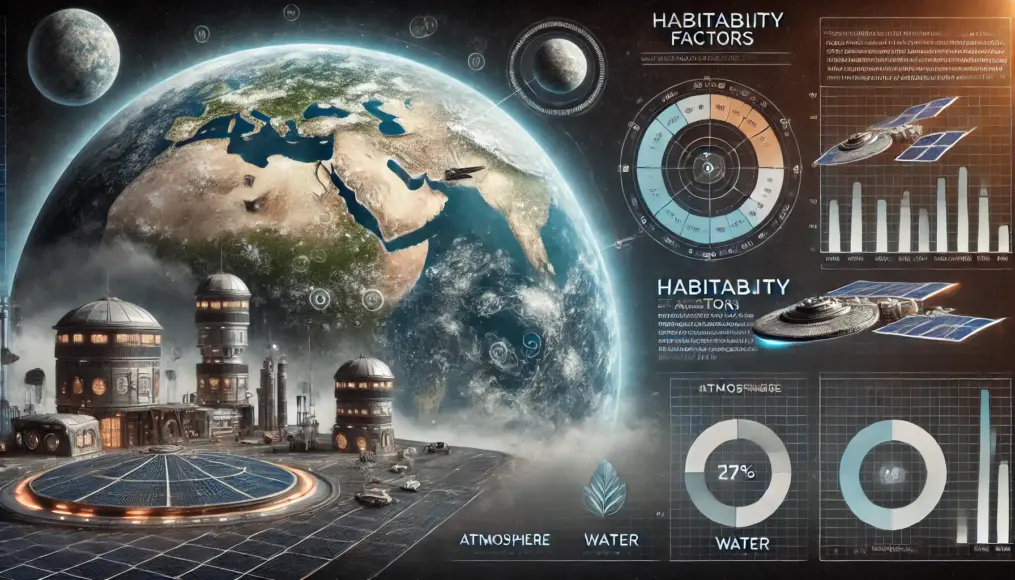
Resource Development and Its Impacts
Migration to new planets will necessitate the development of local resources for water, energy, and food.
Technological breakthroughs to utilize extraterrestrial resources effectively could expand human economic activities to an unprecedented scale.
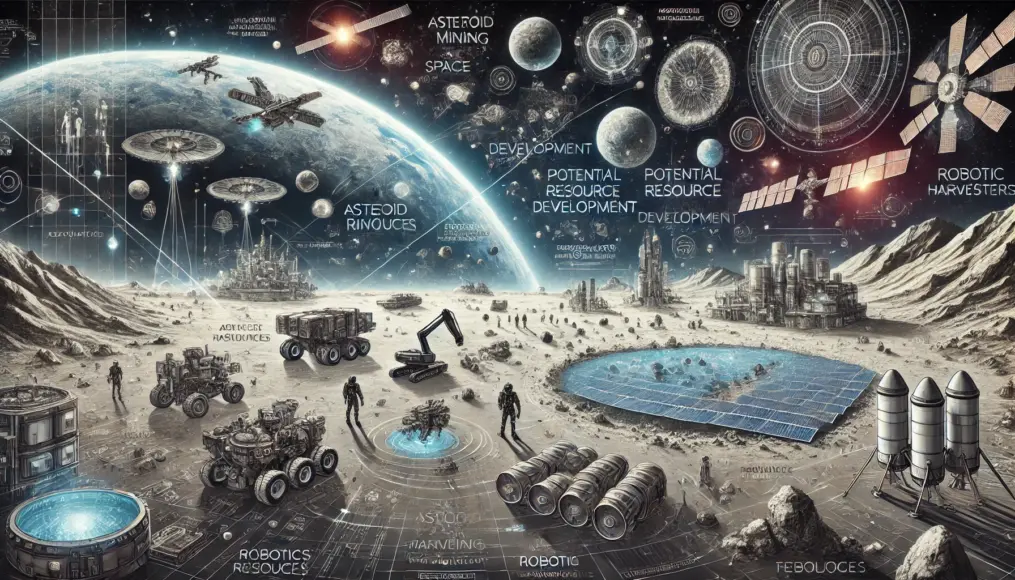
Philosophical Impacts of Time Dilation
Experiencing different flows of time in space challenges us to reevaluate our understanding of “time” and “existence.”
It raises profound philosophical questions about our place in the universe.
Redefining Self-Identity
For space travelers experiencing time differently from those on Earth, the concepts of self-identity and existence may come into question.
Additionally, the time gap between space travelers and people on Earth may necessitate a redefinition of societal relationships.
Such scenarios could transform how we perceive “self” and “belonging.”

The Relationship Between Space Travelers and Earth
When space travelers return to Earth, the discrepancy in perceived time could create cultural and social challenges.
This “time mismatch” might drive the development of new social structures to bridge the gap between Earth and space.
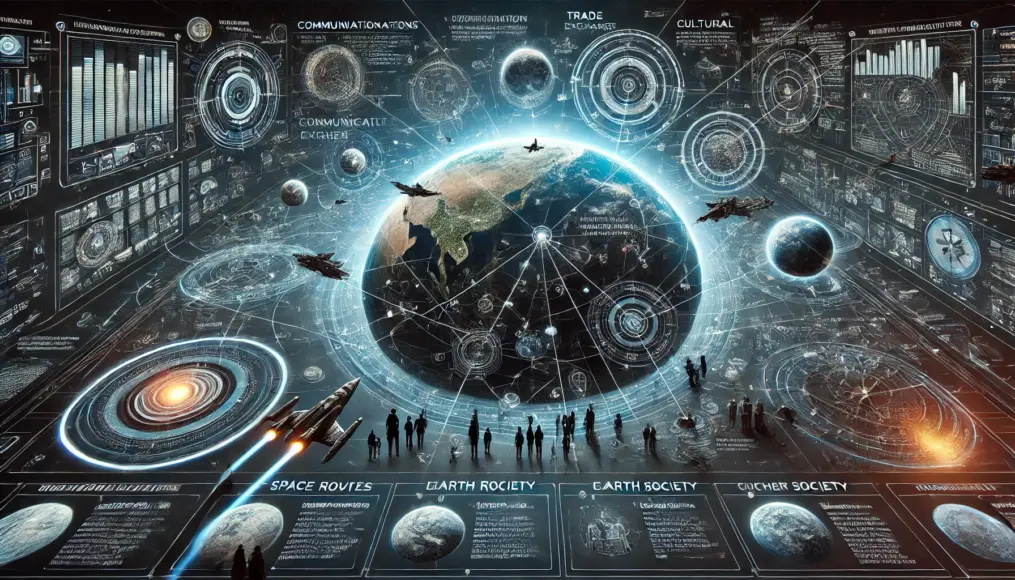
Expanding Economic Frontiers with Space Travel
Mastering near-light-speed travel could pave the way for a new economic realm connecting Earth and space.
This would revolutionize industries, create new jobs, and present unprecedented business opportunities.
The Future of Space Logistics and Trade
Rare resources and new materials extracted in space could become valuable commodities for Earth, accelerating space trade.
As a result, spaceports and orbital stations could emerge as economic hubs, uniting Earth’s and space’s economies.
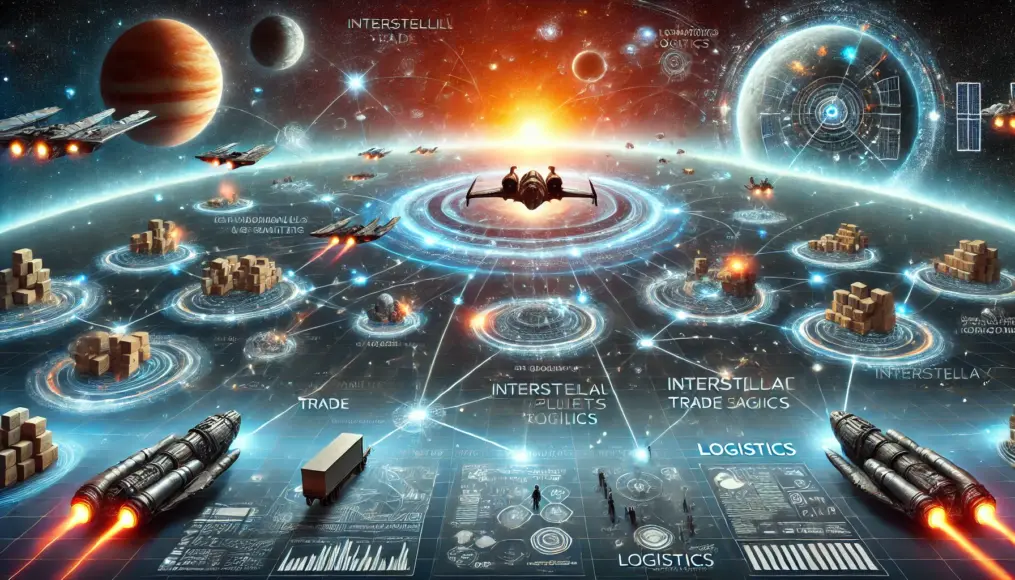
A New Era for Tourism
The generalization of space travel could redefine the tourism industry.
Long-term space stations and specialized space tour ships may become popular destinations, reshaping the concept of travel.
This development could transform the way humanity experiences leisure and exploration.

The Mysteries of Time Dilation on Spacecraft
When a spacecraft travels close to the speed of light, an extraordinary delay in the passage of time occurs.
This phenomenon, known as the “Twin Paradox,” has sparked many debates.
What challenges would arise if we could use this time dilation to travel into the future?
Let’s delve into these unresolved mysteries.
Why Spacecraft Create a Different Time Axis from Earth
The reason time slows down inside a spacecraft is based on Einstein’s theory of relativity.
The closer an object moves to the speed of light, the slower time flows relative to an external observer, such as those on Earth.
However, no human has experienced such time dilation directly, leaving the specifics of how this theory would function in practice largely unknown.
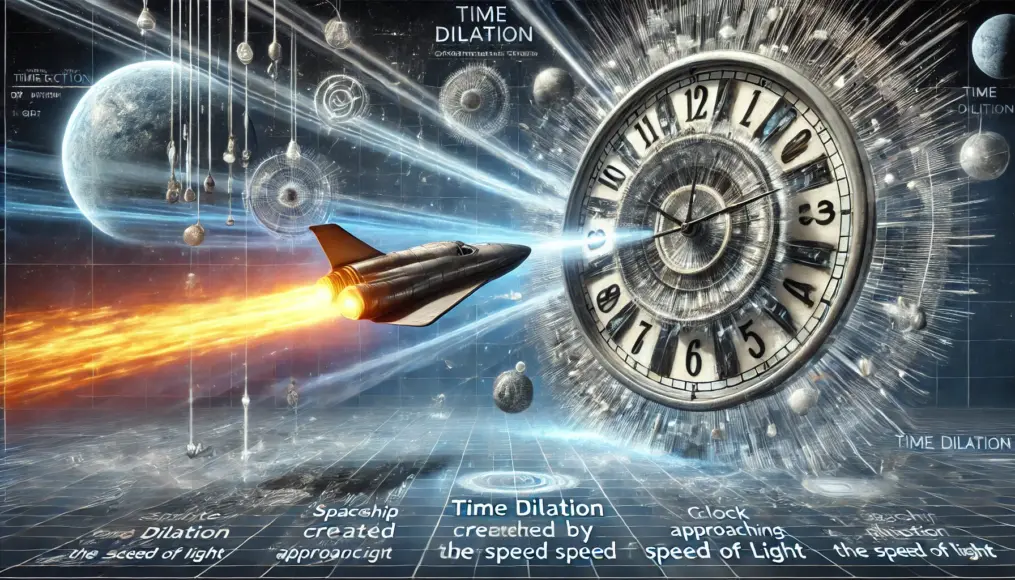
Theoretical Contradictions and Questions
Current science posits that as an object approaches the speed of light, its mass would approach infinity, making light-speed travel impossible.
Nonetheless, some scientists speculate about surpassing this limit using wormholes or “negative energy.”
However, this pursuit brings unresolved issues, such as energy demands and potential breakdowns of physical laws.
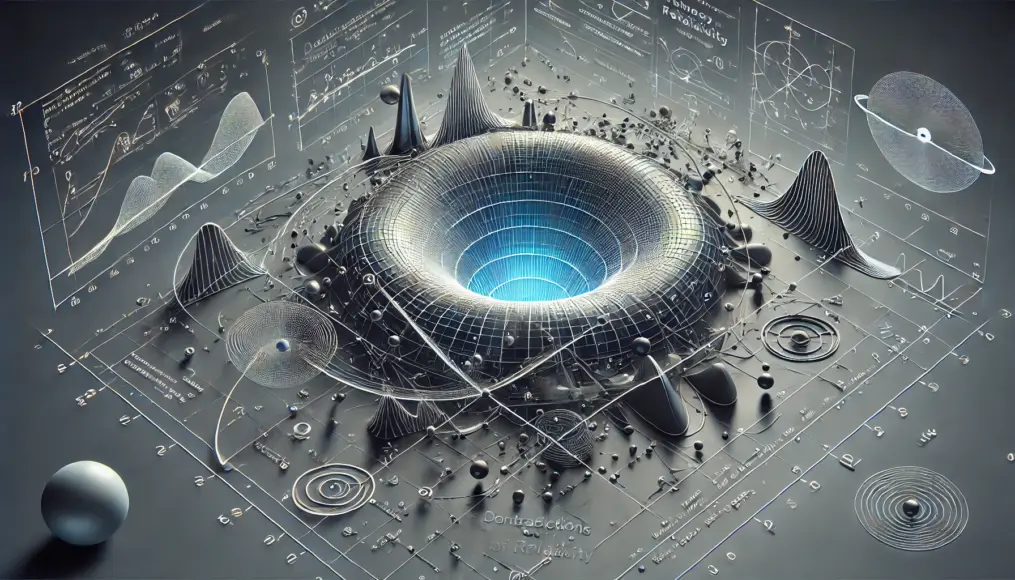
Ethical Issues of Time Dilation
If technology enabling time dilation for future travel were realized, ethical dilemmas would likely emerge.
For instance, how might interfering with the past or future affect society as a whole?
Who would control such technology, and how should it be used?
These questions are bound to grow more pressing as scientific advancements continue.
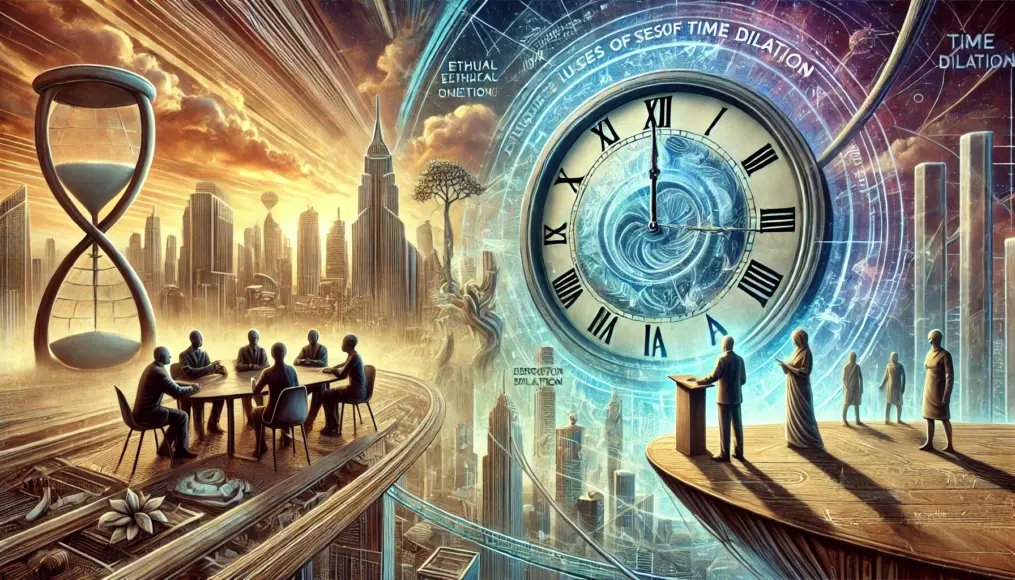
Pondering the Path to the Future
A journey involving time dilation aboard spacecraft represents a profound possibility brought about by scientific progress.
However, with so many unresolved factors and ethical concerns, its realization may be far in the future.
What are your thoughts on the potential this phenomenon holds?
What attitudes should humanity adopt as we advance into the future?
Please share your reflections on this article!

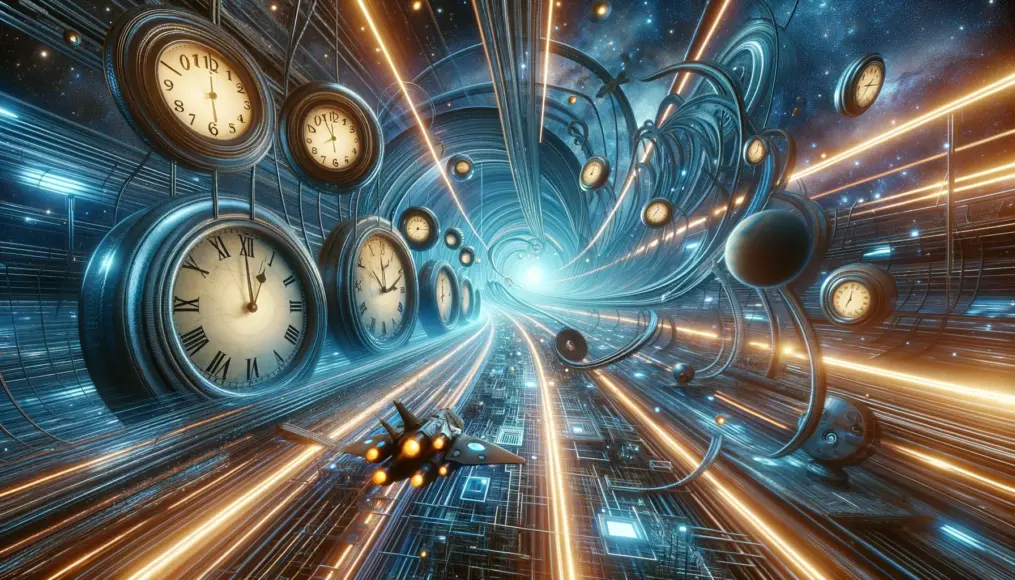


Comment